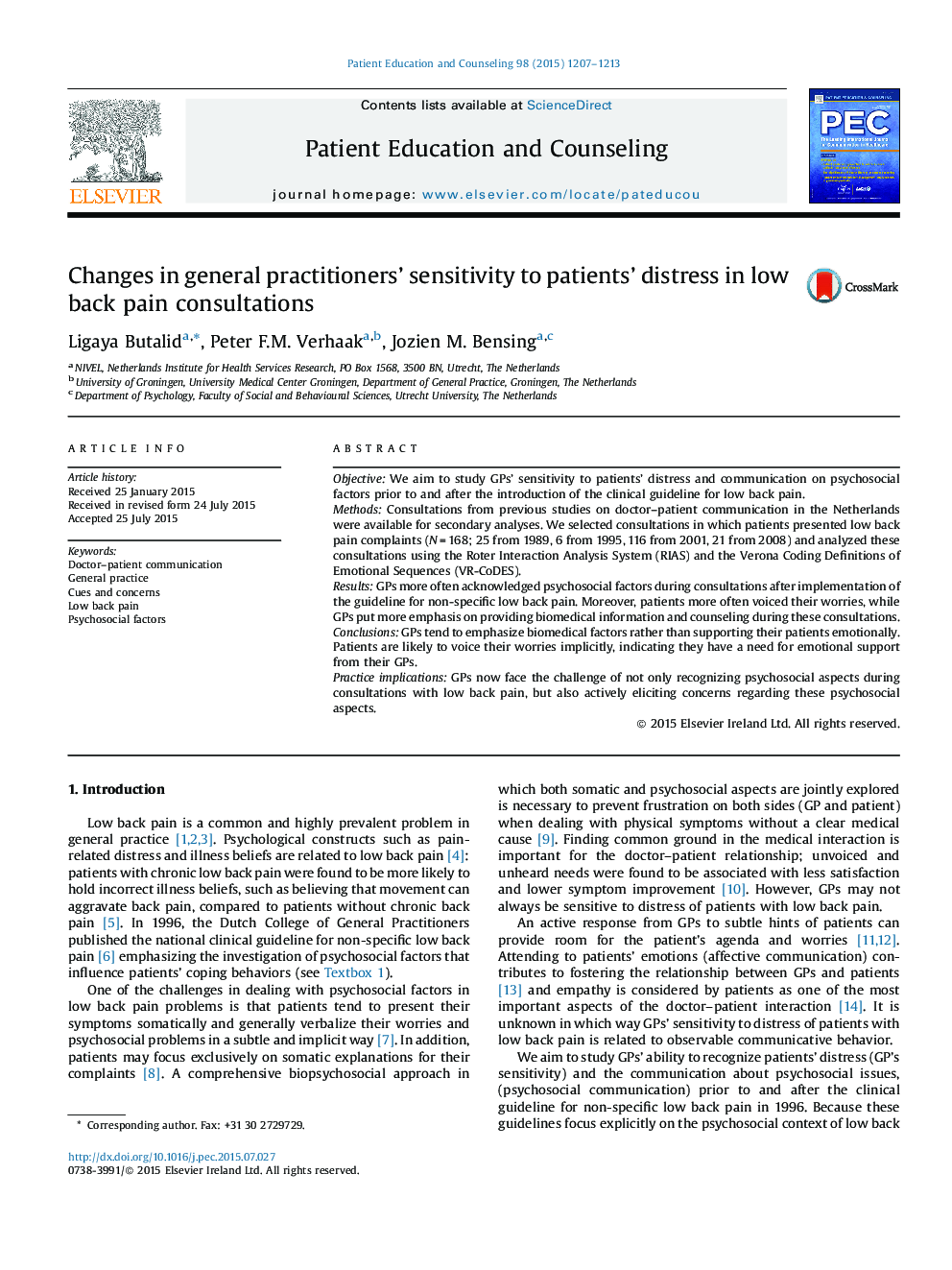| Article ID | Journal | Published Year | Pages | File Type |
|---|---|---|---|---|
| 6152188 | Patient Education and Counseling | 2015 | 7 Pages |
â¢In time we observe GPs' more often acknowledging psychosocial factors in low back pain consultations.â¢In time patients tend to voice more cues and concerns.â¢Patients verbalize their worries in a subtle and implicit way.â¢GPs provide biomedical information rather than supporting their patients emotionally.
ObjectiveWe aim to study GPs' sensitivity to patients' distress and communication on psychosocial factors prior to and after the introduction of the clinical guideline for low back pain.MethodsConsultations from previous studies on doctor-patient communication in the Netherlands were available for secondary analyses. We selected consultations in which patients presented low back pain complaints (NÂ =Â 168; 25 from 1989, 6 from 1995, 116 from 2001, 21 from 2008) and analyzed these consultations using the Roter Interaction Analysis System (RIAS) and the Verona Coding Definitions of Emotional Sequences (VR-CoDES).ResultsGPs more often acknowledged psychosocial factors during consultations after implementation of the guideline for non-specific low back pain. Moreover, patients more often voiced their worries, while GPs put more emphasis on providing biomedical information and counseling during these consultations.ConclusionsGPs tend to emphasize biomedical factors rather than supporting their patients emotionally. Patients are likely to voice their worries implicitly, indicating they have a need for emotional support from their GPs.Practice implicationsGPs now face the challenge of not only recognizing psychosocial aspects during consultations with low back pain, but also actively eliciting concerns regarding these psychosocial aspects.
